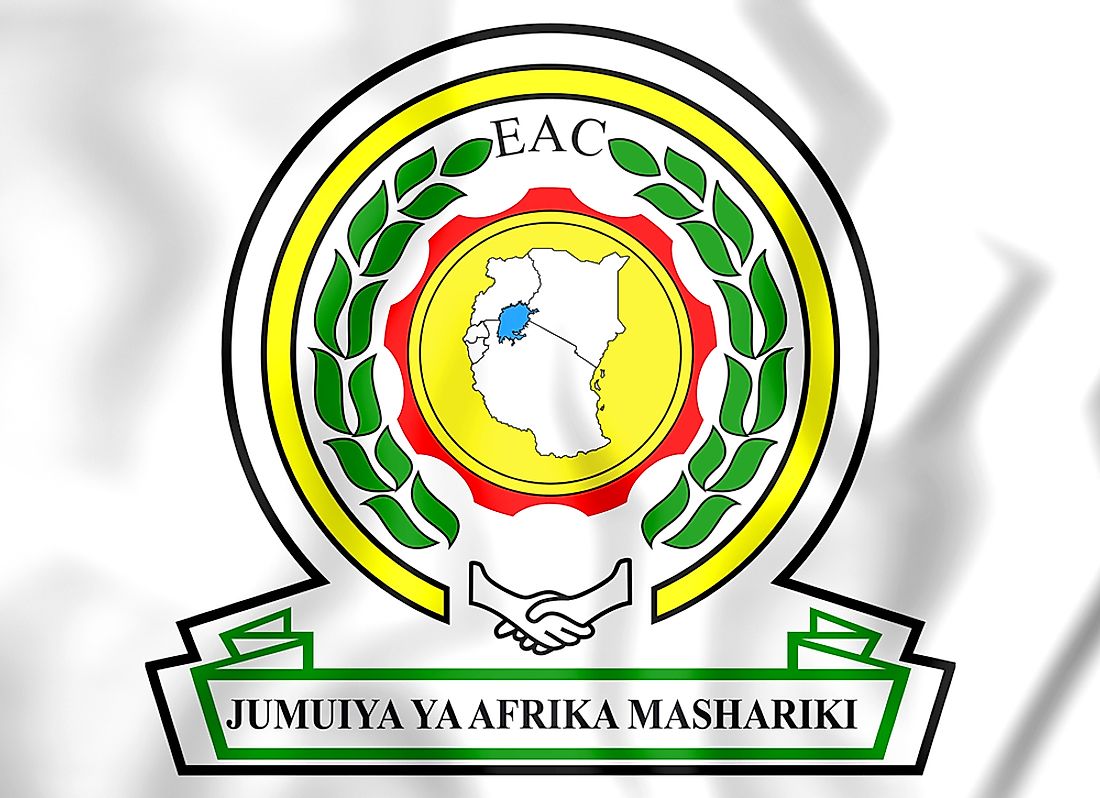What is the East African Community?

The East African Community (EAC) is an intergovernmental regional body that brings together east African countries of Kenya, Uganda, Tanzania, Rwanda, Burundi, and South Sudan. These countries are within the African Great Lakes region. The first EAC that brought together Kenya, Uganda, and Tanzania collapsed in 1977 and was, in 2000, revived by the three countries. Rwanda, Burundi, and South Sudan joined this community over a period of time. Sudan and Somalia have expressed interests to join the community. The main vision of EAC is to establish the East African Federation. However, the community has had its share of suspicion among member states.
History
Kenya, Uganda, and Tanzania have a historically intertwined social, economic, and political background including the shared Lake Victoria. Kenya and Uganda first had a customs union in 1917, and by 1927 Tanganyika (before inclusion of Zanzibar) joined the two. There were previous bodies like the East African High Commission (EAHC) (1928-1961) and the East African Common Services Organization (EACSO) (1961-1967). EACSO dissolved to form the first EAC in 1967 whose aim was to have a common market, common customs, and other services to grow the economies. At the time, Kenya was, and remains, EACs biggest economy. EAC collapsed because Kenya demanded more seats at the top organs, and there were also unrealistic demands by both Tanzania and Uganda. Uganda dictator Idi Amin also accused Tanzania of hosting forces out to topple him. Although the collapse led to the loss of benefits of economies of scale, Kenya celebrated. In 1993, presidents Moi (Kenya), Museveni (Uganda), and Mwinyi (Tanzania) signed the Treaty for EAC that kickstarted reintegration process that came to fruition in 2000. Rwanda was the first to join, followed by Burundi. South Sudan is the latest member of the EAC to join. Since then EAC has progressed smoothly with confederation as the immediate need then federation.
Structures and Initiatives
The EAC region is rich in minerals and agricultural products. With only Kenya and Tanzania having coastlines, the EAC countries have several integrated infrastructure plans that include pipelines, railways, and roads connecting the countries. The main organs of the EAC are:
The Summit: The heads of state or government of the member countries who steer the strategic vision of EAC. This organ sits once annually.
Council of Ministers: Makes important decisions and is also the governing organ of the EAC. Members of this organ are the ministers or cabinet secretary from the six countries in whose dockets the EAC lies. The Council of Ministers sits twice each year.
Coordinating Committee: The Coordinating Committee coordinates all the activities of the Sectoral Committees and also recommends the establishment, composition, and functions of the Sectoral Committees. This committee meets twice per year but may hold extraordinary meetings upon request.
Sectoral Committees: These committees often meet to conceptualize programmes and conduct thorough monitoring and evaluation of the programme’s implementation.
East African Court of Justice (the Court): The Court ensures the adherence to the law when interpreting and applying the EAC Treaty. This Court seats in Arusha and has Sub-registries in all of the member states within the premises of the local courts.
East African Legislative Assembly (EALA): EALA has the legislative, representative, and oversight mandate. Each partner state elects nine people to sit in EALA and also has seven ex-officio members.
The Secretariat: The Secretariat is the executive organ that acts as the guardian of the treaty. This Secretariat has the Secretary General with four deputies, the Counsel of EAC, and hundreds of permanent staff who work on a daily basis.
In addition, the EAC also has a standby force hosted in Nairobi Kenya and recently rolled out a single passport.
Demographics
English and Swahili are the official EAC Languages. Other major languages include French, Kinyarwanda, and (O)Luganda. Burundi and Rwanda share close ethnic ties while some ethnic communities live in more than one country like the Luo (Kenya, Tanzania, Uganda, and some roots in South Sudan) and Maasai (Kenya and Tanzania). In total, EAC has 169,519,847 inhabitants and if it were a country, it would have been ninth largest population globally. Nairobi, Dar es Salaam, Kampala, Kigali, Mombasa, Bujumbura, Mwanza, Arusha, Dodoma, Kisumu, Mbeya, and Juba are the largest cities by population and infrastructure respectively.







